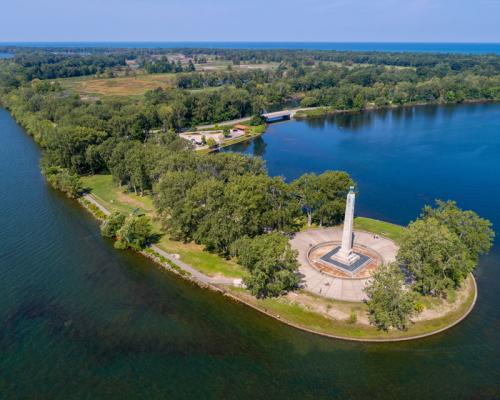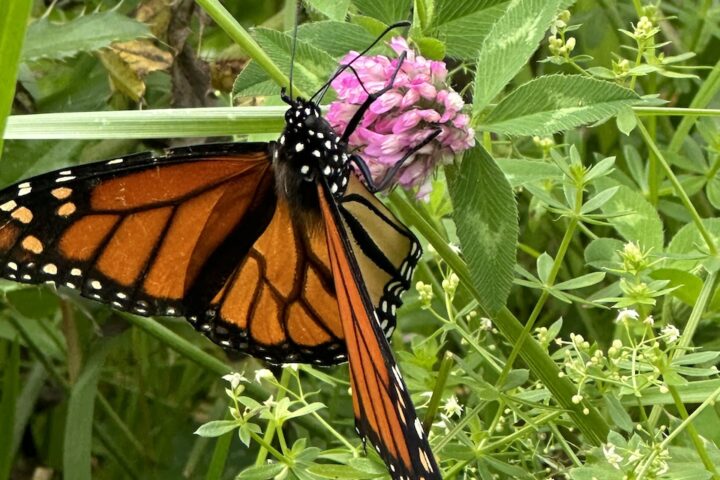On April 4, the William Penn Foundation announced more than $40 million in new funding for the Delaware River Watershed (DRWI), which is among the country’s largest non-governmental conservation efforts to protect and restore clean water. The DRWI is a first-of-its-kind collaboration involving 65 non-governmental organizations working together to protect and restore the Delaware River and its tributaries, which provide drinking water for 15 million people in Pennsylvania, New York, New Jersey, and Delaware.
DRWI’s bottom-up approach represents a strategic path forward for the Delaware River basin. It is a nationally significant model that demonstrates the power of an organized, independent, non-profit-driven approach that encourages partnership between communities and the philanthropic sector.
Tasked with leading one of the eight targeted areas identified by the DRWI as priority zones—where interventions could significantly safeguard or improve clean water—the Brandywine-Christina Watershed Partners consists of the Brandywine Conservancy, Brandywine Red Clay Alliance, Natural Lands, Stroud Water Research Center, The Nature Conservancy-Delaware, and the University of Delaware Water Resources Center. Recently the Partners completed work on a four-year watershed protection and restoration project funded in part by the William Penn Foundation. Under the grant, the Partners focused on land protection, agricultural restoration through the implementation of best management practices (BMPs), in-stream restoration, and improvement of municipal regulations to better protect water resources. These activities were concentrated in six targeted focus areas within the Brandywine-Christina Watershed, which consists of the headwater sections of the Brandywine River, Red and White Clay creeks, Little Buck Run, Sharitz Run (a tributary of Doe Run), and Plum Run.
During phase 1, the Brandywine-Christina Watershed Partners preserved 19 farms, covering 1,243 acres with nine miles of streams. Over eight miles of stream-bank fencing was installed and they collectively planted over 34,500 trees along 22 miles of streams, creating over 123 acres of stream side buffers. The Partners also implemented 185 separate agricultural BMPs on 44 critical farms in sensitive headwater areas. Additionally, the Partners were successful in helping six local municipalities to adopt riparian buffer ordinances, setting minimum set-back, management and site maintenance standards for developing properties with streams. Together—leveraging funds already received through the DRWI—the Partners raised over $19.3 million in non-William Penn Foundation funding over the four-year phase 1 period to complete these tasks.
“Over the past four years, the Brandywine-Christina Watershed Partners have achieved amazing successes in protecting and restoring water quality in our watershed. This would not have been possible without the support of the William Penn Foundation and the Partners working closely together as a team,” said David Shields, associate director of land conservation for the Brandywine Conservancy and coordinator of the Brandywine-Christina Watershed Partners. “We look forward to working together over the next three years, building on what has been accomplished to date.”

A publication entitled “Brandywine-Christina State of the Watershed Report” will be issued at a clean water conference on May 3, 2018, where the Partners will share their work and findings with conservationists and policy makers.
Going forward under the William Penn Foundation’s DRWI phase 2 grants, the Partners intend to concentrate on four of the focus areas, excluding Little Buck and Sharitz Runs, and continue their work by protecting 17 additional farms covering 890 acres with agricultural conservation easements, planting at least 10.5 miles of forested stream buffers, and implementing a full suite of agricultural BMPs on 41 farms. Approximately one-and-a-half miles of streams are expected to be restored, and dozens of municipalities will receive planning and technical assistance. To accomplish this work, the Partners will seek to raise over $9.7 million in non-William Penn Foundation funding from public and private sources. In addition, a new conservation funding mechanism is proposed—the Brandywine-Christina Healthy Water Fund—which is projected to secure up to $10 million in new capital funding through investments by the watershed’s downstream beneficiaries in upstream land restoration and protection measures to protect and restore water quality.
At its 2014 launch, the DRWI catalyzed local and regional groups to accelerate conservation efforts. The DRWI stands out as a basin-scale program driven by non-profits and guided by science. In just over four years, DRWI partners have strategically:
- initiated projects that will protect 19,604 acres and restore an additional 8,331 acres
- monitored and sampled water quality at more than 500 sites across four states
This additional $42 million, three-year investment builds on initial successes to protect and restore an estimated 43,484 additional acres and continue science-driven, data-informed efforts to secure clean, abundant water in the basin. The Initiative provides a replicable model that can be used to improve water health across the country.
Threats to the Delaware River basin are significant, demanding a concerted response from private landowners and local officials to protect our natural resources. DRWI is tackling widespread pollution sources that harm clean water in our rivers and streams: erosion and runoff from deforested acres in headwaters; polluted runoff from agricultural fields; flooding and polluted stormwater from cities and suburbs; and a depleted aquifer in southern New Jersey. These growing problems will threaten drinking water for millions of people every day if left unaddressed.
“By design, the Delaware River Watershed Initiative aligns the work of 65 organizations in the watershed to accelerate conservation,” said Andrew Johnson, program director for Watershed Protection at the William Penn Foundation. “The initiative is rooted in the strength of these organizations individually and in their ability to collaborate using science to target the most important places for conservation. Together they are protecting and restoring those places, measuring the impact of their efforts on local streams, and learning collectively to improve their work.”



